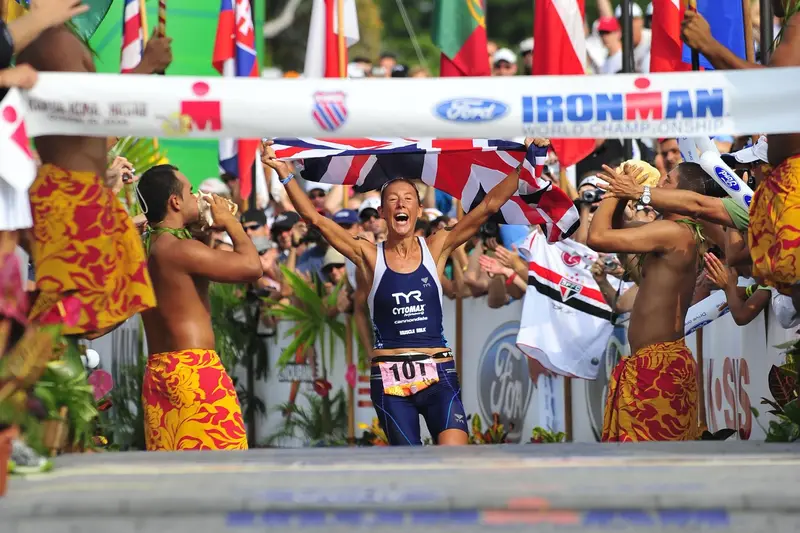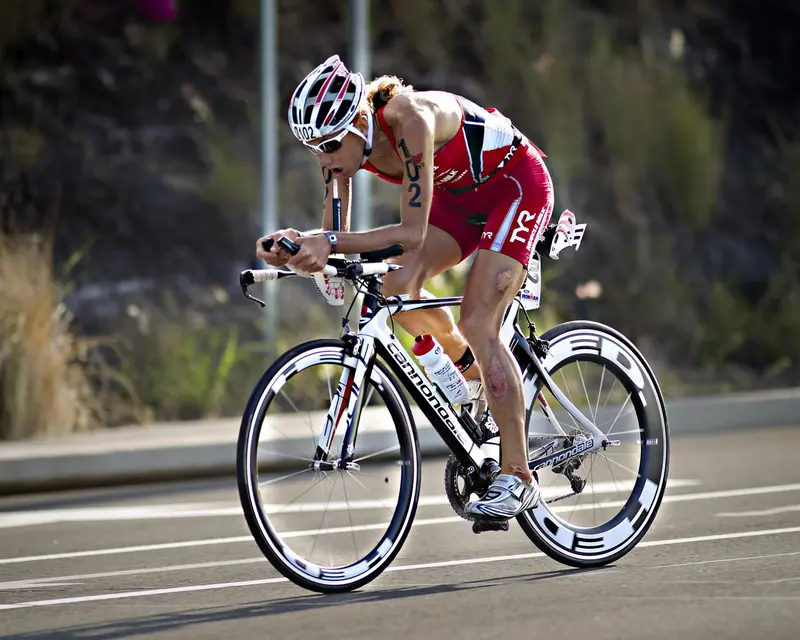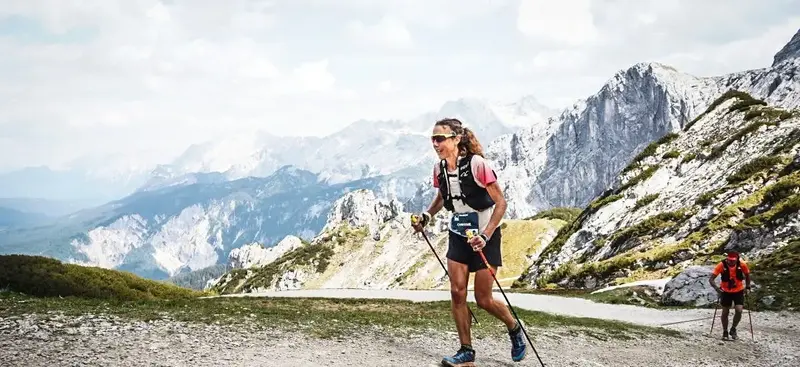We asked four-time IRONMAN® World Champion, Chrissie Wellington, to share an insight into how she fueled her races when she was competing between 2007 and 2011, and what she'd do differently if she were racing today...
As a professional triathlete, I religiously filled in my training log for swim, bike and run sessions with extra comments that ranged from ‘I was like Olympian Rebecca Adlington in the pool today' (a blatant lie) to ‘I wish I’d had a duvet day’.
Whilst my log was focused on the three discipllines of triathlon, this is only part of the story of my athletic career. In reality, I spent a lot of time training my mind and body by focusing on what I call the ‘little big things’; rest, recovery, strength work, ice baths, saunas, massages, bike fits and, of course, nutrition and hydration.
During my non-athletic university days, my definition of fuel and hydration was a curry and a pint. I took things a little more seriously once triathlon became a focus, although I also struggled with disordered eating behaviours, which is a topic I’ll come back to in a future article.
When it comes to the science of race nutrition and how to apply it, so much has changed since I was competing on the world stage. But there are parts that remain the same - mainly the fact that nutrition and hydration should be considered in the context of both performance and holistic health. What you eat on a daily basis directly impacts your training and your race day performance.
Here I will focus on race day, and what I ate before and during the 140.6 miles (226.3km) of an IRONMAN® distance triathlon...

Trial and error
Two important points to make are that nutrition and hydration are individual and iterative. I didn’t magically get my N=1 formula right straight away, I spent a lot of time trialling and testing. And just because I was winning, it doesn't mean that what I was doing was always optimal.
In my first IRONMAN® race in Korea in 2007, I was astounded to see the local athletes stopping by the side of the road, miraculously pulling a bowl of rice and cutlery out of their bike jersey pockets and then sitting down to consume their picnic, before heading off again.
I'm pleased to say that my approach to nutrition was very different. Similar to athletes today, my strategy was shaped by my individual needs and physiology, as well as the digestibility, palatability, and convenience of products, plus the course and the environmental conditions. This knowledge was developed through consulting with experts, learning from other athletes and listening to my body.
Training and some 'less important' races were the time for experimenting, learning and refining, especially during my brick (i.e. bike to run back-to-back) and longer sessions (i.e. those with longer race pace efforts).
I'd spend time practising with the food I planned to consume in the 48 hours before the race as part of my carb load, as well as the sports nutrition I'd use during the event itself. I kept a log to help me systematically record, reflect and identify any patterns. I wouldn’t say I always got it right, with underfueling leading to fatigue on several occasions, as well as GI distress caused by mistakes in the type and amount of fuel I consumed.
My IRONMAN® Race Nutrition Strategy
On race day, I had breakfast two-and-a-quarter hours before the race start. My meal of choice was hot rice porridge with honey and tahini or peanut butter stirred in, as well as half a banana, a small cup of coffee and some water.
I sipped on water before the start, but didn’t take on any additional fuel until I was on the bike. On reflection, I think taking on some easily digestible carbs just before the warm-up would have been a good idea to ensure my stores were topped up for the 50 minutes that the 2.4 mile (3.8km) swim took me.
My middle-distance and full-distance race fuel came largely from carbohydrates, derived from a mix of fluids, semi-solids (such as gels) and a few solid foods. After bouts of GI distress in my first few IRONMAN® races, I consulted with experts and subsequently omitted protein.
During the 112 mile / 180km bike leg I would have:
- two bottles of quite concentrated, carbohydrate and electrolyte-rich energy drink which I sipped at regular 15-minute intervals
- two gels with 30g of carbs (and a smattering of electrolytes) - which were stuck on my top tube - at 55 miles (90km) and 93 miles (150km)
- and a bar (cut into four segments and I'd eat one piece an hour)
I also used an aerobar-mounted hydration system for water. I certainly wasn’t as focused on aerodynamics as athletes are today, so the gels were stuck to my top tube and stuffed in my back and side pockets.

During the marathon, I’d have one caffeinated energy gel (with 30g of carbs) every 25 minutes, taken just before an aid station and then washed down with some water, although I didn’t measure the exact quantity of water I was consuming. In the last 10km I might also grab some (flat) coke at the aid stations.
For a race, I generally carried more than I needed just in case of spillages, breakages or mishaps and would research what was provided at the race aid stations, even if I didn’t plan to use them. I also used the ‘special needs’ stations (a specific location on the bike and run course where you can collect a pre-deposited bag containing your own nutrition). I always put spares in my special needs bag just in case I accidentally dropped a bottle, lost a gel or if the race was taking much longer than expected.
It’s worth noting that I was finishing IRONMAN® races in under nine hours. If you’re a triathlete who's closer to the 17-hour mark, your race intensity will likely be lower which will impact how much you take on and in what form.
What would I do differently?
There would be a lot I'd tweak if I were still racing today. For the bike and run, my intake was approximately 60g of carbohydrate per hour. Talking to Emily from the PF&H Sports Science team, I now know this is on the lower end of the scale. If I were racing today, I think the evidence around dose-response would point to me consuming around 90g of carbs.
I’d also get a Sweat Test as I had absolutely no idea how much electrolytes I was losing, and I had no idea about my sweat rate, especially in the hot conditions in Hawaii
My IRONMAN® days are behind me and I'm now journeying into the dark world of the parent’s race at the school sports day and a bit of ultra-running. Whilst I'm familiar with the fundamentals of sports nutrition, I also know that science has moved on since I was racing, and with so many new products (and lots of social media noise!) it can be hard to figure out what's right for you.
The team at PF&H have been a huge help, offering personalised, science-backed advice that will enable this 48-year-old body to maximise its potential on the trails, whilst I've also been drawing on the many lessons learned from my triathlon days.
Reflecting back, with the benefit of hindsight and developments in nutrition research and understanding, what would I have done differently?
- I would have increased the amount of carbohydrates I was consuming to 80-90g/h
- I could have taken a gel during the 30 minutes before the start to ensure I was topped up for the swim
- I would have had a Sweat Test so I could be a lot more precise about the amount of electrolytes I was consuming

I would also have liked to have fed into, and advocated for, more female-specific research to enhance our understanding of our needs. Thankfully, times are changing, and we've seen progress in this area since I hung up my triathlon lycra.
Ultimately change is the only constant in sport and life. We do our best with the information and tools we have at the time; but we must also be prepared to adapt as our bodies and goals change, and science reveals new ways of optimising performance.
